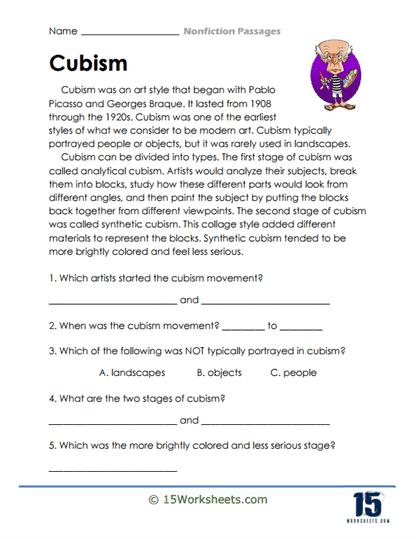Cubism

Worksheet Description
The worksheet is about Cubism, an art style that began with Pablo Picasso and Georges Braque in the early 20th century. It explains the characteristics of Cubism, describing it as one of the earliest modern art styles and noting its deviation from traditional portrayals of people or landscapes. The passage outlines the two main types of Cubism: analytical, which deconstructs objects into different parts viewed from multiple angles, and synthetic, which is characterized by brighter colors and less serious tones. Additionally, the worksheet includes questions for students to answer based on the passage, testing their understanding of the information provided.
The goal of this worksheet is to teach students about the Cubism art movement, its origin, characteristics, and its significance in the history of modern art. It aims to familiarize students with key concepts related to Cubism, such as the different stages of the movement and its stylistic elements. By answering the questions, students are encouraged to engage critically with the text, reinforcing their comprehension and retention of the material. This exercise also serves to enhance students’ ability to analyze artistic movements and their context within art history.
